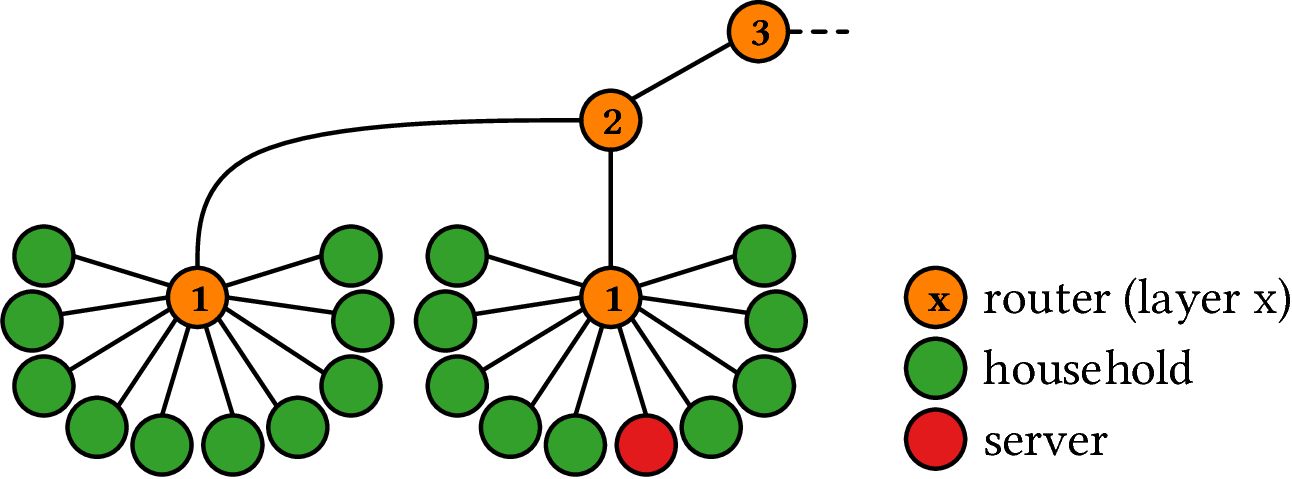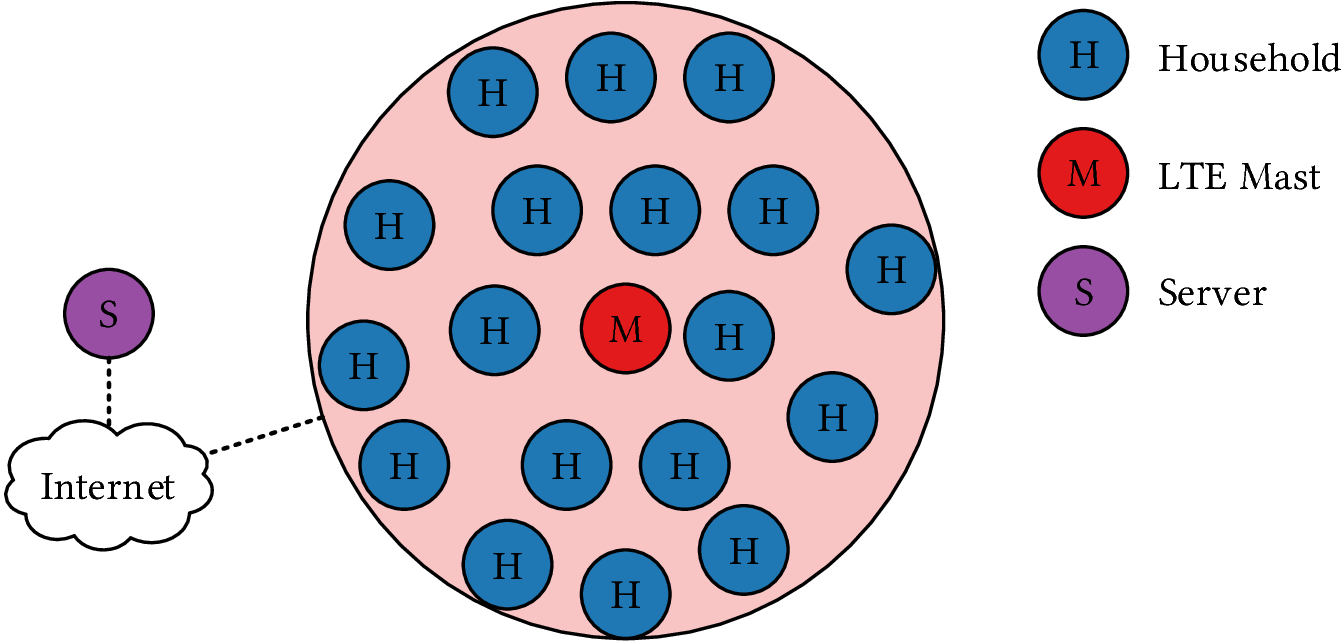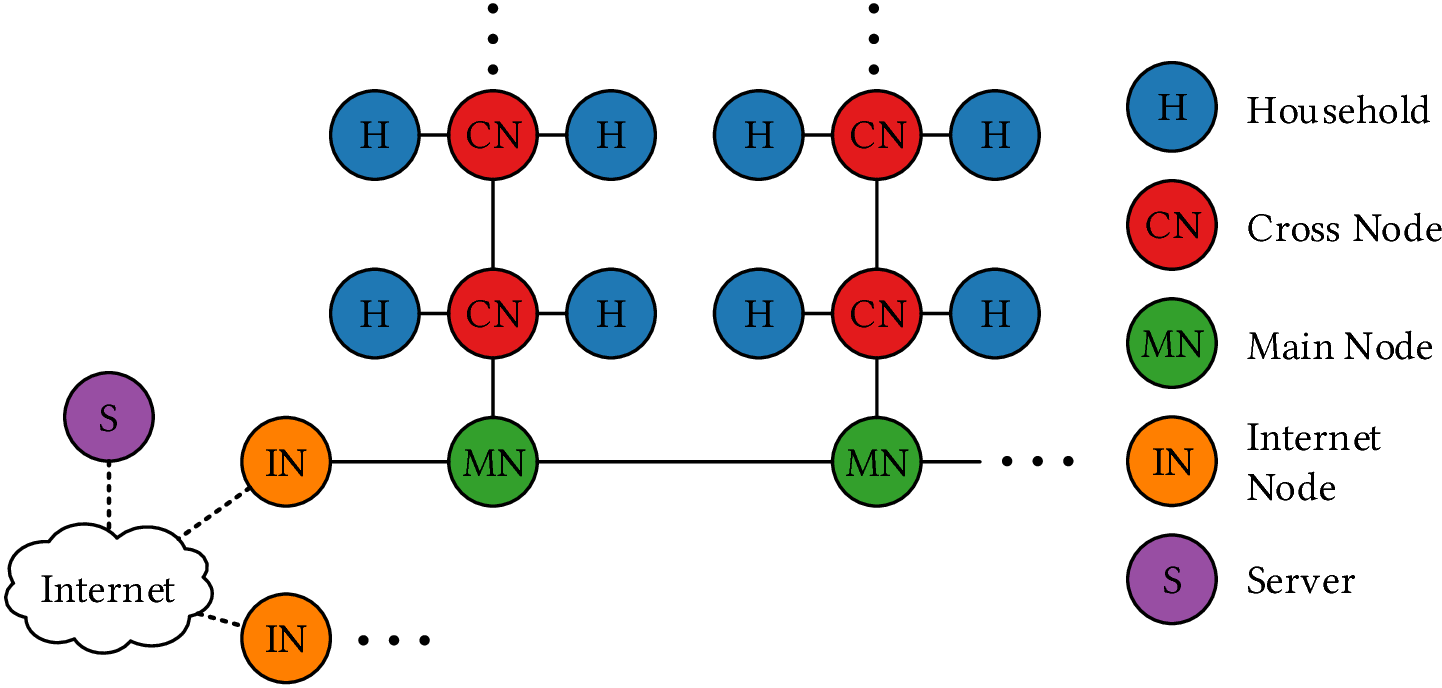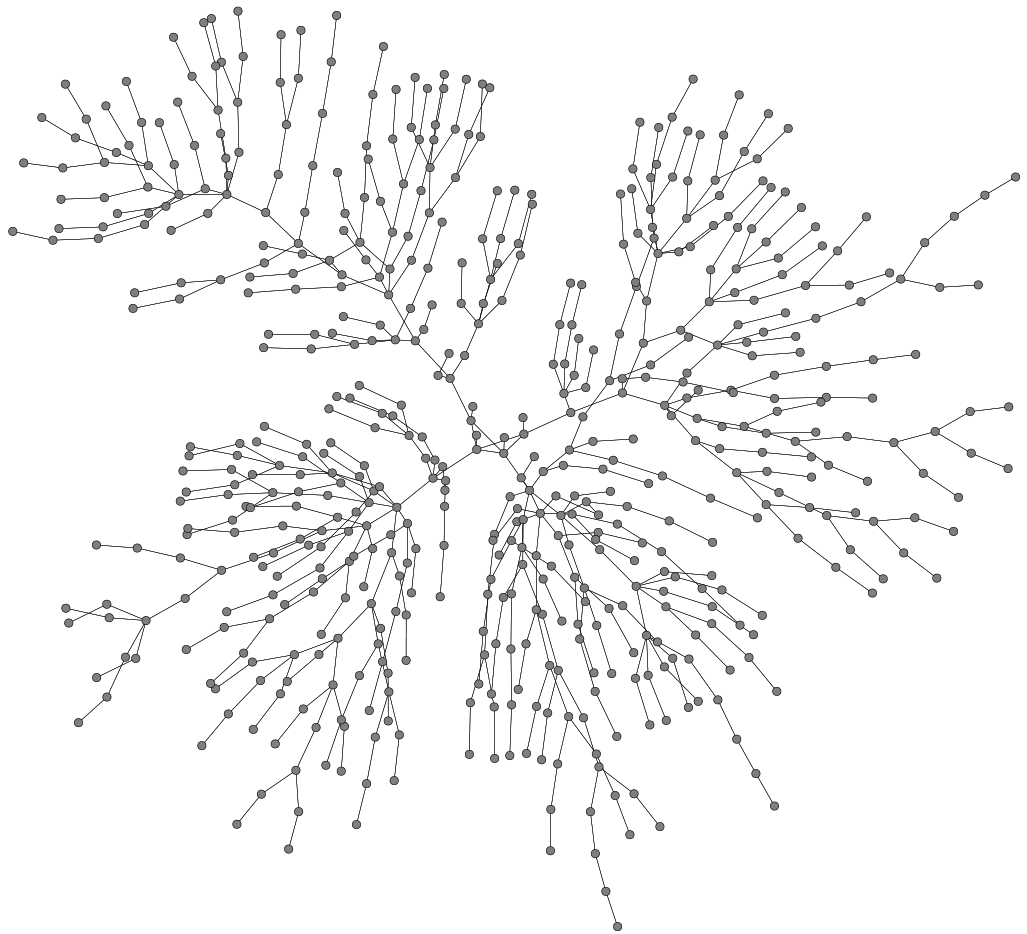Communication Networks
SiENA provides four different communication networks out of the box.
- Wired broadband (DSL-like)
- LTE
- PLC
- BRITE
Households and servers communicate with each other via the communication network. A communication link is an IP-based socket, based on UDP or TCP.
General Parameters:
- Network
- TCP or UDP
- Duplicate package check
Wired broadband

The wired broadband communication network resembles a tree topology. Households and servers are connected in random groups to the bottom layer of a tree of routers.
Parameters:
- Cluster size: 10
- Household/server data rate: 5 Mbps
- Household/server delay: 20 ms
- Router data rate: 1 Gbps
- Router delay: 2 ms
- Tree layers: 3, between root node and households
LTE

In the LTE topology households and servers are placed randomly in groups around a LTE mast.
Parameters:
- Nodes per enb node: 250
- Max distance to enb node: 500 m
- Distance between enb nodes: 1000000 m
- Delay min: 5000 ms
- Delay max: 10000 ms
- Minimum random placement angle: 0
- Maximum random placement angle: 3.1415
- random function: SQRT
- Download: 100
- Upload: 100
PLC

The PLC topology resembles a main street with access roads. The plc-module offers many parameters, which are initialised corresponding to the PRIME standard, which offers 128.6 kbps in the CENELEC-A band.
Parameters:
- Residents in a main street: 100
- Residents in an access road: 10
- A lot of stuff related to PRIME
BRITE

The BRITE topology creates a large representative topology of the Internet. Households and servers are connected to outer nodes. A standard config file of the BRITE tool can be used for configuration.